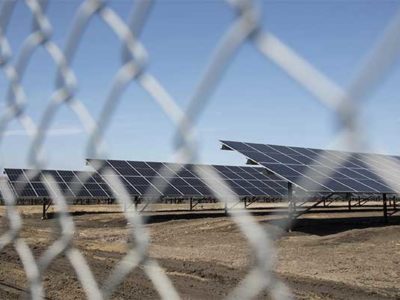- Ontario has launched a $10.9 billion energy efficiency initiative, the largest in Canada’s history, offering significant rebates for homeowners and small businesses to invest in energy-saving upgrades like solar panels, heat pumps, and smart thermostats.
- These programs are expected to reduce electricity demand by 3,000 megawatts by 2036 while saving ratepayers billions in system costs.
- Could this landmark investment reshape the province’s energy future and redefine affordability for residents and businesses alike?
TORONTO – Ontario is launching its Home Renovation Savings Program, part of a historic $10.9 billion, 12-year investment in energy efficiency. The initiative, announced by Energy Minister Stephen Lecce, is the largest of its kind in Canada, aiming to help homeowners and businesses lower energy bills while easing strain on the province’s power grid.
Rebates for Energy-Efficient Upgrades

Stephen Francis Lecce MPP is a Canadian politician and Ontario’s current Minister of Energy and Electrification. Lecce served as the Ontario Minister of Education from 2019 to 2024. (Image via Ottawa Citizen)
Starting January 28, 2025, the Home Renovation Savings Program will offer rebates up to $5,000 for rooftop solar panels and an additional $5,000 for battery storage systems. The rebates will cover up to 30% of upgrade costs, offering significant financial relief for energy-saving improvements, and are processed within 30 to 60 days of approval, ensuring timely support for participants.
“For families upgrading their homes with better insulation, modern heat pumps, or efficient windows, this program means real savings—both upfront and on their energy bills,” Lecce said at a press conference. Homeowners could see rebates as high as $8,900 for insulation or $4,500 for a heat pump, while enjoying up to 50% reductions in heating costs.
Support for Small Businesses
The government is also extending its Peak Perks program to small businesses, including restaurants and convenience stores. Businesses enrolling in the program will receive a $75 prepaid credit for each smart thermostat connected to a central air conditioning system or heat pump, with an additional $20 annually for each device.
These efforts are part of a broader strategy to address Ontario’s projected 75% increase in electricity demand by 2050, driven by population growth, industrial electrification, and rising EV adoption.
A Broader Framework for Energy Efficiency
The Home Renovation Savings Program is one of several initiatives under Ontario’s Affordable Energy Act, enacted in December 2024. The Act expands access to rebates for households using propane and oil heating—an inclusion absent from earlier programs. The province will also continue its popular Save on Energy programs, targeting businesses, municipalities, and low-income households, among others.
By 2036, the government anticipates these programs will reduce peak electricity demand by 3,000 megawatts—equivalent to removing three million homes from the grid. The investment is expected to save Ontarians $12.2 billion in electricity system costs.
Industry Reactions and Implications

Credit: Independent Electricity System Operator
The Independent Electricity System Operator (IESO) lauded the plan as a significant step toward sustainable energy management. “Energy efficiency is a proven, low-cost resource that delivers meaningful savings,” said IESO CEO Lesley Gallinger.
The Canadian Renewable Energy Association highlighted the inclusion of rooftop solar and battery storage, calling it a “game-changer” for empowering Ontarians to manage their energy use.
Meanwhile, critics like Green Party Leader Mike Schreiner expressed mixed feelings, noting that similar programs were canceled six years ago. “It’s unfortunate people had to wait so long for support that could have saved them money and reduced emissions earlier,” Schreiner said.
Challenges Ahead
Ontario’s energy future remains uncertain as the province grapples with balancing economic growth and environmental commitments. Critics may question whether the programs will reach the households and businesses most in need, particularly in lower-income areas. Additionally, the sheer scale of the investment underscores the urgency of the province’s energy challenges.
Still, the plan reflects a growing recognition of energy efficiency as a cost-effective solution to rising demand and environmental pressures. With programs like the Home Renovation Savings Program set to roll out, Ontario residents have a clear opportunity to lower their bills and contribute to the province’s energy transition.
As enrollment opens, the success of these programs will depend on public participation and sustained government support. Whether the initiative delivers on its promises could serve as a benchmark for other regions grappling with similar energy challenges.















Comments